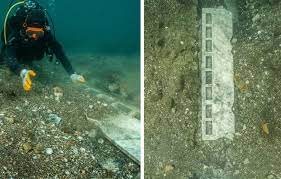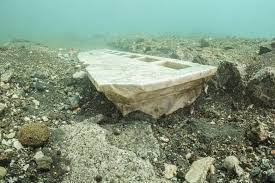Italy: Remains of submerged Nabatean Temple uncovered in Italy

Balled: Italian archaeologists uncovered two marble altars from the lost city of Puteoli, an Ancient Roman trade hub partially swallowed by the Gulf of Naples. Seismic activity capsized parts of the Roman outpost; a contemporary Italian city named Pozzuoli stands on the shore of the same Mediterranean cove.
Ancient Greeks founded Puteoli around 600 BCE. It became part of the Roman Empire and served as a vital trade hub for luxury goods and grain from Alexandria, Egypt.
The recovered altars were part of the “Temple of the Nabataeans,” according to the Italian Ministry of Culture’s April 11 announcement. The ministry stated that archaeologists have long known the approximate location of the submerged temple, but only recently were they able to decipher its exact resting place.

The two marble altars were both part of the same temple.
The Gulf of Pozzuoli (part of the larger Gulf of Naples) submerged part of the ancient Roman city.
The Nabataeans were a powerful civilization of nomadic Arabian merchants. They built Petra in current-day Jordan around the 3rd century BCE. The group retained power in trade networks and held a permanent outpost in Puteoli. From their hub in the Roman city, the Nabateans facilitated trade between the Mediterranean Sea, the Indian Ocean, and mainland Arabia. They grew wealthy in part by controlling the delivery of aromatics such as frankincense and myrrh to Ancient Romans.
The trade partnership turned the Nabataeans and Ancient Romans into allies. Not long after the recently discovered marble altars were created, however, the Ancient Romans conquered Petra in 106 CE. Puteoli remained a trade outpost for Rome until the Empire collapsed.
Other important archaeological finds from the current-day city of Pozzuoli include a statue dedicated to Roman Emperor Domitian, a relief honoring an emperor, and a collection of engraved glass flasks thought to have been distributed as late-Roman souvenirs. The city also has a well-preserved Roman amphitheater (the third largest in Italy) that stands safely above the Gulf of Naples.





